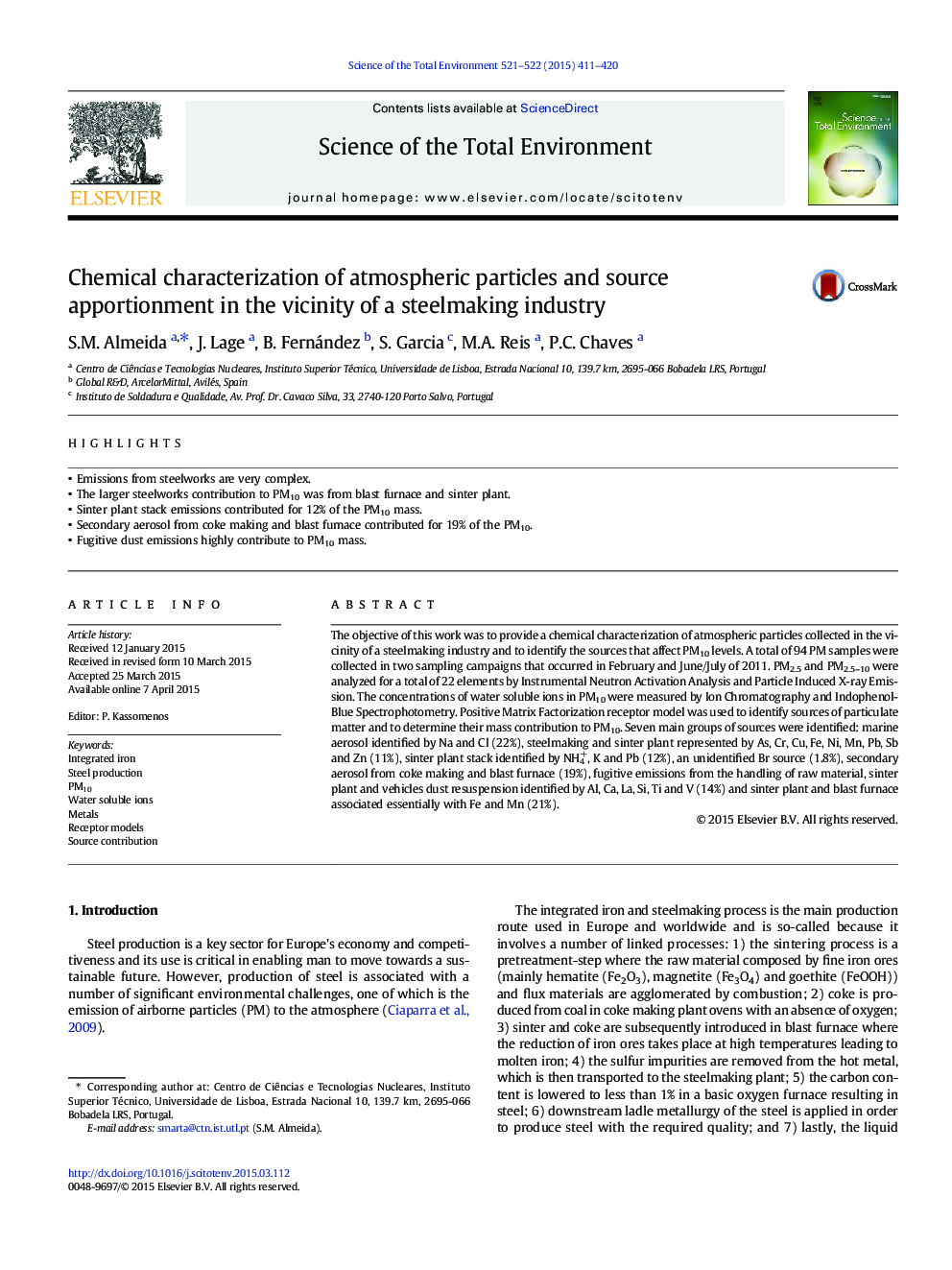| Article ID | Journal | Published Year | Pages | File Type |
|---|---|---|---|---|
| 6326635 | Science of The Total Environment | 2015 | 10 Pages |
â¢Emissions from steelworks are very complex.â¢The larger steelworks contribution to PM10 was from blast furnace and sinter plant.â¢Sinter plant stack emissions contributed for 12% of the PM10 mass.â¢Secondary aerosol from coke making and blast furnace contributed for 19% of the PM10.â¢Fugitive dust emissions highly contribute to PM10 mass.
The objective of this work was to provide a chemical characterization of atmospheric particles collected in the vicinity of a steelmaking industry and to identify the sources that affect PM10 levels. A total of 94 PM samples were collected in two sampling campaigns that occurred in February and June/July of 2011. PM2.5 and PM2.5-10 were analyzed for a total of 22 elements by Instrumental Neutron Activation Analysis and Particle Induced X-ray Emission. The concentrations of water soluble ions in PM10 were measured by Ion Chromatography and Indophenol-Blue Spectrophotometry. Positive Matrix Factorization receptor model was used to identify sources of particulate matter and to determine their mass contribution to PM10. Seven main groups of sources were identified: marine aerosol identified by Na and Cl (22%), steelmaking and sinter plant represented by As, Cr, Cu, Fe, Ni, Mn, Pb, Sb and Zn (11%), sinter plant stack identified by NH4+, K and Pb (12%), an unidentified Br source (1.8%), secondary aerosol from coke making and blast furnace (19%), fugitive emissions from the handling of raw material, sinter plant and vehicles dust resuspension identified by Al, Ca, La, Si, Ti and V (14%) and sinter plant and blast furnace associated essentially with Fe and Mn (21%).
